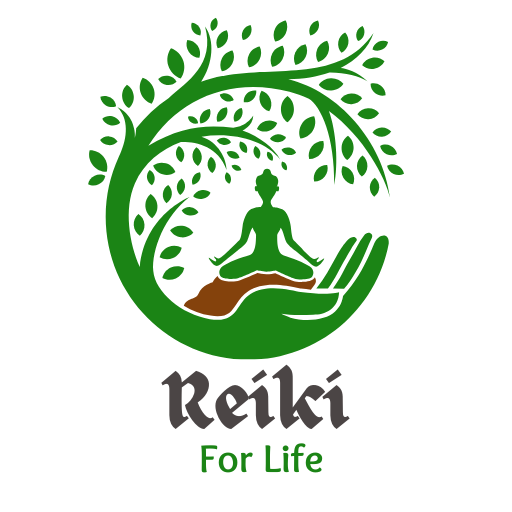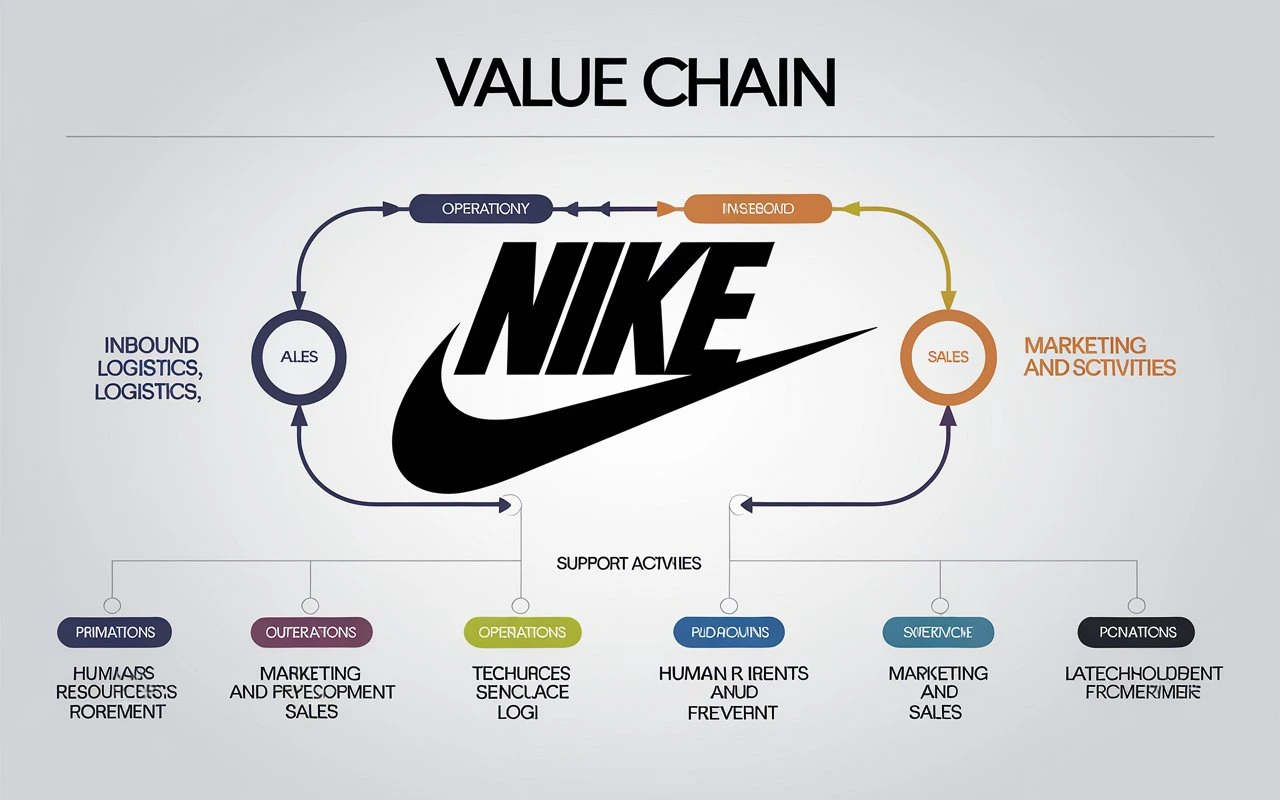Global leader in the athletic footwear and clothing market, Nike has developed its success by means of a quite effective value chain. Nike keeps commanding the market by carefully controlling its marketing campaigns, manufacturing techniques, and supply chain.
This Value Chain Analysis on Nike will dissect Nike’s primary value chain elements, go over its lean supply chain practices, and underline how it keeps its competitive advantage.
Understanding Value Chain Analysis
By use of a value chain analysis, companies may spot activities adding value and streamline processes for profitability and efficiency. Primary activities—related to production and delivery—as well as support activities—which increase efficiency and innovation—are separated in the analysis.
|
Primary Activities |
Support Activities |
| Inbound Logistics | Firm Infrastructure |
| Operations | Human Resource Management |
| Outbound Logistics | Technology Development |
| Marketing & Sales | Procurement |
| Service | – |
Companies including Nike, Adidas, and Puma employ this structure to enhance their competitive edge.
Nike’s Primary Value Chain Activities
Nike optimizes its primary activities to ensure cost efficiency, quality, and market reach.
-
Inbound Logistics: Sourcing and Raw Materials
Nike’s inbound logistics center on worldwide supplier outsourcing of production. Nike guarantees affordable and flexible manufacturing by working with more than 500 manufacturers spread across 41 countries instead of running factories.
Key strategies:
- Nike’s Lean Supply Chain method to lower waste and raise effectiveness
• Getting goods from moral and environmentally friendly vendors.
• Modern systems of inventory control tracking raw supplies.
-
Operations: Manufacturing and Production
Nike’s operations are mostly centered on contract manufacturing, hence independent suppliers manage production while Nike concentrates on design and marketing.
Key elements of Nike’s operations:
- Nike Supply Chain Case Study:Changing to a lean manufacturing approach, the business cut faults by half.
- Robotics and automation in advanced manufacturing.
- Adoption of environmentally friendly methods include shoe materials made from recyclable goods.
-
Outbound Logistics: Distribution and Warehousing
Nike guarantees rapid worldwide distribution by means of regional distribution centers (DCs) located in North America, Europe, and Asia.
Key logistics strategies:
- Nike Supply Chain Diagram shows its multi-tiered system of distributing goods from producers to warehouses, stores, and internet buyers.
- Maximising shipment efficiency with third-party logistics (3PL).
- Direct-to– Consumer (DTC) approach, thereby lessening of intermediary dependency.
-
Marketing & Sales: Brand Power and Digital Growth
One of the best marketing plans available in the business, Nike’s emphasizes:
- Inspired advertising efforts help to create emotional brand.
- Well-known sponsorships by sportsmen like Serena Williams and Michael Jordan.
- Driven digital sales by investments in Nike.com and SNKRS app.
-
Service: Customer Satisfaction and Innovation
Nike tries to enhance customer experience by methods of:
- Customized shopping experiences available through Nike applications.
- Excellent after-sales assistance and return rules.
- Customer involvement motivated by innovation—like Nike Fit technology for size suggestions.
Nike’s Support Value Chain Activities
Nike’s support activities enhance efficiency, innovation, and long-term sustainability.
-
Firm Infrastructure: Strategic Leadership and Vision
Nike leadership focuses on sustainability, innovation, and market expansion.
- Nike Value Statementsemphasize performance, sustainability, and community impact.
- Heavy investments in digital transformation.
-
Human Resource Management: A Global Workforce
With around 80,000 employees globally, Nike guarantees a solid skill pool in fields including design, marketing, and supply chain management.
HR initiatives include:
- Diversity and inclusion programs.
- Competitive compensation and training programs.
-
Technology Development: Innovation in Footwear
Nike invests in R&D for high-performance sports gear.
- Nike Flyknit and Air technologyfor advanced footwear design.
- AI-driven Nike Fit appfor precision shoe sizing.
- Supply chain transparency via Blockchain
-
Procurement: Ethical Sourcing and Sustainability
Nike gives ethical production and responsible sourcing top priority.
- Products use recycled materials and 100% sustainable cotton.
- Dedication to carbon neutrality by then of course
read more: Human impact on the environment during walks
Nike’s vs. Adidas: Value Chain Comparison
Nike and Adidas are two of the largest sports brands, both leveraging value chain optimization for success.
Factor |
Nike |
Adidas |
| Manufacturing Model | Outsourced production | Mix of in-house and outsourced |
| Marketing Focus | Athlete endorsements | Performance and lifestyle branding |
| Sustainability Approach | Sustainable materials, carbon neutrality goals | Use of recycled plastics, lower carbon footprint |
| Digital Sales | Strong direct-to-consumer growth | Focus on digital transformation |
Nike’s streamlined supply chain and strong branding approach help them to have a competitive edge over Adidas in market share.
Value Chain Analysis on Nike PDF & PPT Resources
For students and researchers, there are several resources available online for in-depth study.
- Value Chain Analysis on Nike PDF:Detailed reports from business schools and industry experts.
- Value Chain Analysis on Nike PPT:Presentation slides covering Nike’s supply chain strategy.
- Nike Supply Chain Case Study:Examining Nike’s shift to lean manufacturing.
These materials provide valuable insights into Nike’s operational strategies.
FAQs
1. What are the key elements of Nike’s value chain?
Technology, HR, and environmental initiatives support Nike’s value chain—inbound logistics, manufacturing, outbound logistics, marketing, and customer service.
-
How does Nike use lean supply chain methods?
Nike’s lean supply chain reduces waste, production time, and costs, improving efficiency and quality.
-
Where can I find a Nike value chain analysis template?
Templates are available in business research reports, academic PDFs, and PowerPoint slides online.
-
What makes Nike’s supply chain successful?
Outourced production, regional distribution hubs, and digital transformation help Nike’s supply chain to be successful.
-
How does Nike’s value chain compare to Adidas’?
Nike stresses marketing and outsourcing over Adidas’s combination of performance-based branding and environmental consciousness.
Conclusion
Nike’s worldwide success depends mostly on its value chain strategy, which has helped them to dominate the sports footwear and apparel markets. Nike has developed a great competitive edge by optimising logistics, using striking branding, and funding innovation. Moreover, its value chain study shows how the business has included digital transformation and sustainability into its operations, therefore enabling it to keep ahead of sector changes. Nike therefore keeps raising new benchmarks and is a major player in the business. Furthermore, the company’s value chain will continue to be a significant engine of innovation and expansion, therefore guaranteeing its leadership in the footwear industry as it develops.











